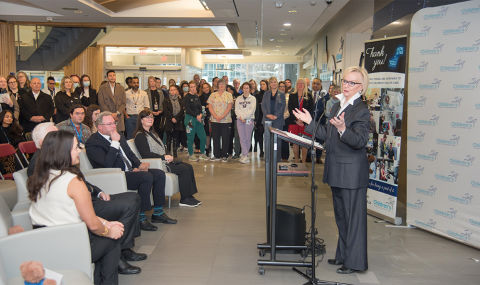Resource Consumption
Every time we buy something we are consuming the earth’s natural resources. Trees are cut to produce paper products, oil is extracted and processed into plastic, and various minerals are mined to make eyeglasses and toothpaste. Although most of the products we utilize in our workplace are essential to our operations, we may be able to lessen our impact by choosing products made with recycled content, have a longer shelf life, or can be easily reused or recycled. By making these smart decisions we could reduce resource consumption and make a positive contribution to conservation of the earth’s resources.
Did you know ...
Nearly 4 billion trees are cut down each year for paper.
Source: www.ecology.com
We consume 4 or 5 barrels of oil for every 1 barrel that is discovered.
Source: www.relocalize.net
It is estimated that humanity is consuming the earth's resources 20% faster than they can be sustained.
Source: www.population-awareness.net
Pollution
There are various products and materials used in our facilities that emit pollutants during both their manufacture and use. Emissions associated with the manufacturing industry are a major contributor to air pollution. Certain products, such as cleaners, contribute to poor indoor air quality during their use, then go down the drain and end up clogging up our waterways.
As a major consumer of products and materials, we have the opportunity to influence manufacturers to improve their environmental performance. Additionally, we can factor in environmental criteria into our purchasing decisions, and begin sourcing alternative products that are bio-based, and will not contribute to the pollution of our environment.
Waste Management
When a purchase is made, we get the product we want, along with a lot of wastes we do not want! Most products come packaged in some kind of paper, plastic, styrofoam and/or some combination thereof…all of which simply gets thrown into the garbage upon receipt of the product. What cannot be recycled is landfilled, and will remain in the earth practically forever.
Certain products, like batteries and mercury thermometers, become hazardous wastes at the end of their lifespan and are difficult to dispose of responsibly.
Today’s consumer has many more options than ever before, and choosing products with less hazardous content is a very small, but very effective way of reducing hazardous wastes. Rather than using disposable packaging, many manufactures have opted to package and transport their products in re-useable totes. Seeking out these companies will not only support these types of initiatives, but will encourage environmentally sound behaviors within the manufacturing industry as a whole.
Toxicity
Many of the products that we use may contain toxic chemicals that have the potential to cause various health effects, and can cause the onset of asthmatic episodes, reproductive disorders and even cancer. It is important to be pro-active when making purchasing decisions and pay special attention to the products and ingredients used in the products you are buying. By choosing more eco-friendly products, we would be contributing to both environmental and human health and well being.
Issues specific to Healthcare:
|
Did you know ... The Mad Hatter character in Carol Lewis’s “Alice in Wonderland” was a portrayal of actual hat makers in the 1800s who had gone mad from mercury exposure during the wool felting process. |


